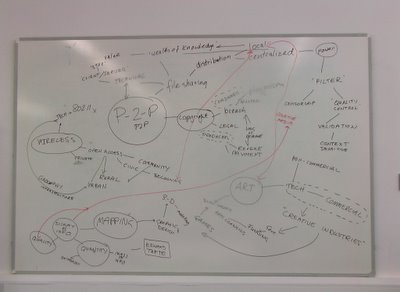BA/BSC(H) Design For Interactive Media (Top Up)
Brief Four
Paper Chosen: The Reader Creates a Personal Meaning
Author: Georg Strøm
Critique by: Raymond O’Brien
Email: ray.obrien@gmail.com
Student Number: 05002100
Submission Date: 21/10/05
Introduction
From the proceedings of one of the conferences held each year by the British Human Computer Interaction Group I have chosen an article written by Mr. Georg Strøm. The paper focuses on the different types of textual descriptions that are commonly used in interaction design and software development. The study is done in search of which form of textual description is most suited and preferred by both users and developers to improve their understanding of technical information using either; human centred stories, scenarios, technical descriptions or various combinations.
Structure
I find the paper was well structured and the information contained is linear. Strøm introduces the subject of the research through a set of introductory paragraphs. In section 2, he names and describes the methods he plans to incorporate in the research and gathering of results. He uses a number of volunteers that a variety of reading and technical skills to conduct surveys on. From these surveys he obtain his results to fuel a discussion and conclude a final result on the preferred method of textual description. The results obtained from his survey were pooled together into a table to give a clear structure for viewing such results.
“Human Centred Stories give a Better Understanding of a Situation of Use”
The research in this paper helps give a structural view on which textual description method works best with software and interface development. According to Nielsen [2004] “The concept of narrative scenarios views the narrative as aid for exploration of design ideas.” Strøm, through this research has come to his conclusion that human centred story telling is statistically more efficient at providing an understanding of an interface. Also, it proved to introduce new ideas in the design of software and their interfaces. Where as, general scenarios, technical descriptions and a combination of the two, while being useful methods, proved to be less effective.
Stories and Prototypes as Catalysts for Communication, Thomas Erickson, User Experience Architect's Office, Apple Computer, Inc. “Stories are concrete accounts of particular people and events, in particular situations; scenarios are often more abstract -- they are scripts of events that may leave out details of history, motivation, and personality.” This I believe would strengthen Strøm’s argument about stories being more efficient. According to Strøm’s research presented in this paper, “the writing of human centred stories generated substantially more new ideas for the interface. They gave a more realistic description of the situation experienced by the user.” The details included in the stories were more descriptive that involved with scenarios and or technical descriptions.
From Strøm’s second study, he came to the conclusion that the reader discovers his or her own personal meaning from a text. In other studies led by Erickson, it is said that this is a downside to story telling being used as a descriptive method in the software development and interface design. Strøm “the reader does not absorb the contents of the text”, he also says that, “readers tend to select the first understanding that fits part of a text”. This would lead to a misunderstanding of the text and mistakes being made in utilising or even designing an interface.
Strøm doesn’t victimise or rule out the use of technical descriptions or use of scenarios, in fact he states that, “a combination of technical descriptions and scenarios or human-centred stories gave a hetter understanding of the structure of a system”.
From this study, I would place scenarios as a general outlook of giving an interface a purpose without detail. As in a short abstract of what is needed or available in an interface. Technical description would be more suited for industrial overviews. They would be descriptions that, the majority of users would refrain from reading. This in turn gives Strøm’s conclusion, in that “stories with emotions are more readable, making it more likely that they actually are read (…by software developers…users and other stakeholders).”
Contacting The Man Himself
Apart from diving into research a few of the references in this article, I took the liberty of send Strøm an email, unfortunately and not to any surprise I did not receive a reply. The questions in which I ask are available in the accompanying copy of the email sent. In an attempt at researching his online website, I found it quite disappointing as his website was forbidding me access.
Conclusion
I hope to continue looking into possible further research by Georg Strøm. From reading this article, I now opened an interest in this area. His findings have given me some useful information, which I will take into consideration when doing Usability Testing on future projects.
References:
Erickson T. [1995]. Notes on design Practice: Stories and Prototypes as catalysts for Communication, http://www.pliant.org/personal/Tom_Erickson/Stories.html
Nielsen, Engaging Personas and Narratives Scenarios, http://ep.lib.cbs.dk/download/ISBN/x656444362.pdf.
Read more!




